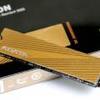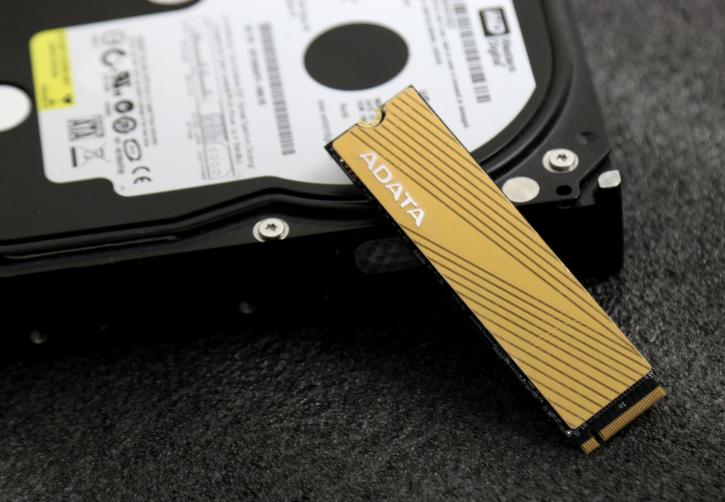Introduction
ADATA Falcon NVMe SSD
So how's Realtek doing with their SSD controller?
ADATA released a new NVMe SSD; it should be a value product based on the new Realtek RTS5762DL controller that moves its data over four channels. The product is tagged to reach 3 GBs reads, and 1.5 GB/s writes at a price of roughly 130 USD for the 1TB model. You can soon purchase this Falcon series 256GB, 512GB, 1TB, and 2TB models; the units are tagged to sell at 130 USD for the tested 1TB version. The specifications look good, the numbers dazzling, but will this unit deliver what it claims? See the thing is that is has been fitted with a relatively new controller, the Realtek RTS5762DL. Read performance is tagged at 3 GB/s speeds, writes at 1.5 GB/sec. The SSD comes in an M.2 package. Using the PCIe lanes interface it is so much more capable as it can deal with way more bandwidth using PCI-Express lanes Gen 4.0. As such, M.2 solutions are intended for high-end and enthusiast-class motherboards and similarly positioned laptops.
- Max Sequential Read - Up to 3100 MBps
- Max Sequential Write - Up to 1500 MBps
- 4KB Random Read - Up to 180K IOPS (QD32)
- 4KB Random Write - Up to 180K IOPS (QD32)
- Endurance 1TB / >600 TB and 2TB / >1200TB
- Warranty 5-Years Limited
While the stability and safety of your data have become a number one priority for the manufacturers, the technology keeps advancing at as fast a pace as it does, the performance numbers a good SSD offers these days are simply breathtaking. You get between 450 MB/s to 500 MB/sec on SATA3 which is the norm for a single controller based SSD. In the year 2020, by combining advanced NAND Flash controller with PCIe Gen3 (8Gb/s) x 4, NvMe 1.3 interface and 3D NAND Flash, PCIe M.2 delivers sequential read speed up to 3200MB/s, and sequential write speeds up to 1500MB/s. It is now 2020, and PCIe Gen 4 NvMe 1.3 is also here, offering closer to 5 GB/s performance - ranges, and that is factor 10 over the SATA3 SSD. A couple of years ago a 128 GB SSD was hot stuff, then slowly we moved to 256 GB, last year 512 GB for an SSD in a PC was the norm, this upcoming year we'll transition slowly to roughly Multi-TB SSDs as the norm. With the market being so huge, fierce and competitive, it brought us to where we are today... excellent volume SSDs at acceptable prices with high-speed performance. We'll inspect the product PCB and components later on in the review in detail. This unit uses vertically stacked NAND (also referred to as 3D NAND) and is now available multiple capacities. With a low power design, this drive will be among the mainstream to fastest SSDs we have ever tested.
The SSD is a Non-Volatile Memory Express (NVMe 1.3) M.2 form factor SSD; it has been fitted with new Vertically stacked NAND (likely new 96-layer BiCS) TLC. The performance numbers of a proper SATA3 SSD offers these days are simply excellent, but with the more niche NVMe SSDs, you can easily quadruple performance, which offers serious numbers. The unit follows a smaller M.2 2280 form factor (8cm), so it will fit on most ATX motherboards capable of M.2 just fine. Next page and onwards into the review then.


